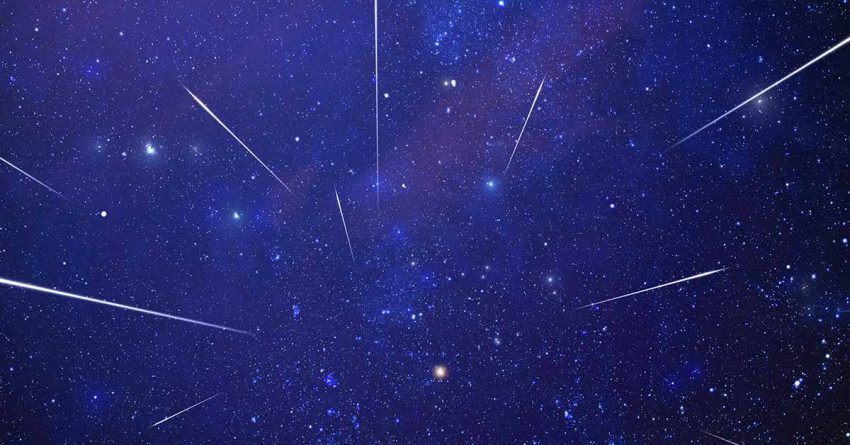The Perseid Meteor Shower Returns for 2025
The Perseid Meteor Shower has made its annual return, marking the beginning of one of the most eagerly anticipated celestial events of the year. Starting on July 17, 2025, the night sky has transformed into a canvas for this dazzling astronomical display. Over the next few weeks, observers around the globe can witness meteors streaking across the heavens, creating an unforgettable spectacle.
While the peak activity is expected to occur in mid-August, there are compelling reasons to begin watching earlier. The current waning crescent moon provides dark skies, which are optimal for spotting early meteors. As the weeks progress, the moon will grow brighter, gradually reducing visibility, particularly during late-night hours when meteor activity is typically at its highest.
This guide will help you make the most of your viewing experience before the moon begins to interfere. From what to expect and when to look, to practical tips and insights on why this shower is unique, here’s everything you need to know to enjoy nature’s most spectacular show.
Why the Perseids Stand Out
Each year, Earth passes through the debris trail left by Comet Swift-Tuttle. As these particles enter our atmosphere, they burn up, creating glowing trails across the sky. The Perseid Meteor Shower is known for its fast and bright meteors, which often travel at speeds exceeding 200,000 kilometers per hour. These meteors leave long, visible trails, and occasionally, a larger fragment may produce a fireball that briefly lights up the night.
What makes the Perseids particularly popular is their reliability and accessibility. During the peak, observers can see up to 100 meteors per hour. Even in the early stages, many people are already spotting 10 to 20 meteors per hour under the right conditions.
Starting early offers real advantages. Since July 17, meteors have already begun appearing, especially in dark, rural areas. The radiant point, located in the constellation Perseus, rises around 22:30 UTC. From midnight to 4:00 AM, the sky darkens further, and the radiant climbs higher, offering the best chance to see multiple meteors. The current moon phase allows for dark skies, which will change in August when the moon begins to rise earlier and appear brighter.
How to Watch the Perseid Meteor Shower Effectively
You don’t need expensive equipment to enjoy this event. With a little preparation, you can turn any quiet night into a memorable experience.
Choose a location far from streetlights and buildings. Parks, farms, and hilltops often offer wide-open views and darker skies. Once there, lay out a blanket or set up a reclining chair so you can comfortably look up for an extended time.
Let your eyes adjust to the dark for at least 20 minutes. Avoid using phones and other sources of bright light. Face northeast or look directly overhead. Although the meteors appear to originate near Perseus, they can streak across any part of the sky.
Dress warmly, especially if you’re in a cooler region. Bring snacks, a warm drink, and perhaps a friend or two to make the experience more enjoyable. Stay out for at least an hour to give yourself time to see multiple meteors, since they tend to arrive in bursts with pauses in between.
What to Expect During the Peak and How to Work Around the Moon
The Perseid Meteor Shower will peak on August 12 and 13, but this year’s timing presents a small challenge. The moon will enter its last quarter phase and rise after midnight, which means its brightness could interfere with viewing, especially in the early morning hours.
To make the most of the peak, plan to view the sky before moonrise or as early in the evening as possible. Although the most activity typically occurs after midnight, watching earlier might provide darker skies and help you see brighter meteors.
Many seasoned stargazers prefer watching the Perseid Shower before the peak. Early viewing allows for quieter skies, fewer crowds, and better overall visibility without the moon competing for attention.
Why the Perseid Meteor Shower Is Worth Your Time
There is something timeless and peaceful about watching meteors flash across the night sky. Whether you’re alone or with others, the Perseids offer more than just a visual show. They create moments of stillness, awe, and connection with the universe.
Unlike fireworks or light displays, meteor showers happen naturally. They’re silent and unpredictable. Some meteors flash quickly while others drift with glowing trails. No two are the same.
Astronomy groups consistently name the Perseids among the best meteor showers of the year. Their brightness, frequency, and wide visibility make them ideal for new stargazers and experienced observers alike. For many, watching the Perseids becomes a yearly tradition that blends wonder with nature.
Watch Now Before Conditions Change
If you want to experience the Perseid Meteor Shower at its best, now is the time to act. The early part of the shower brings active skies with little interference from the moon, and the conditions won’t stay this ideal for long.
Don’t wait for the peak and risk being disappointed by moonlight. Plan a night out soon. Find a quiet spot, bring a blanket, and look up. Even if you only see a few meteors, the experience will stay with you.
You don’t need a telescope or fancy gear to enjoy the Perseids. All you need is a clear night, a bit of time, and a sense of wonder. Watching the Perseid Shower could easily become your favorite summer tradition.
